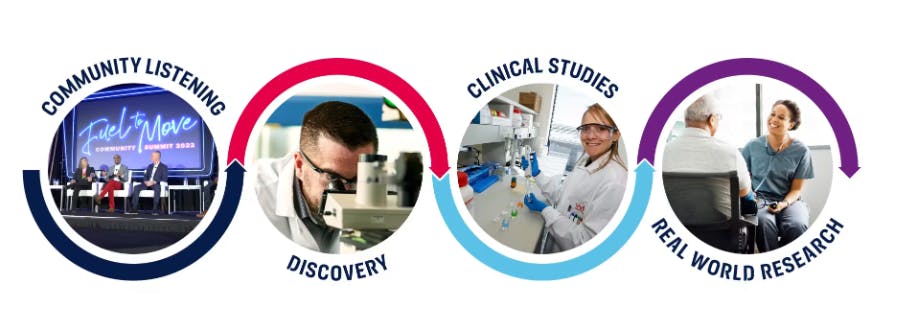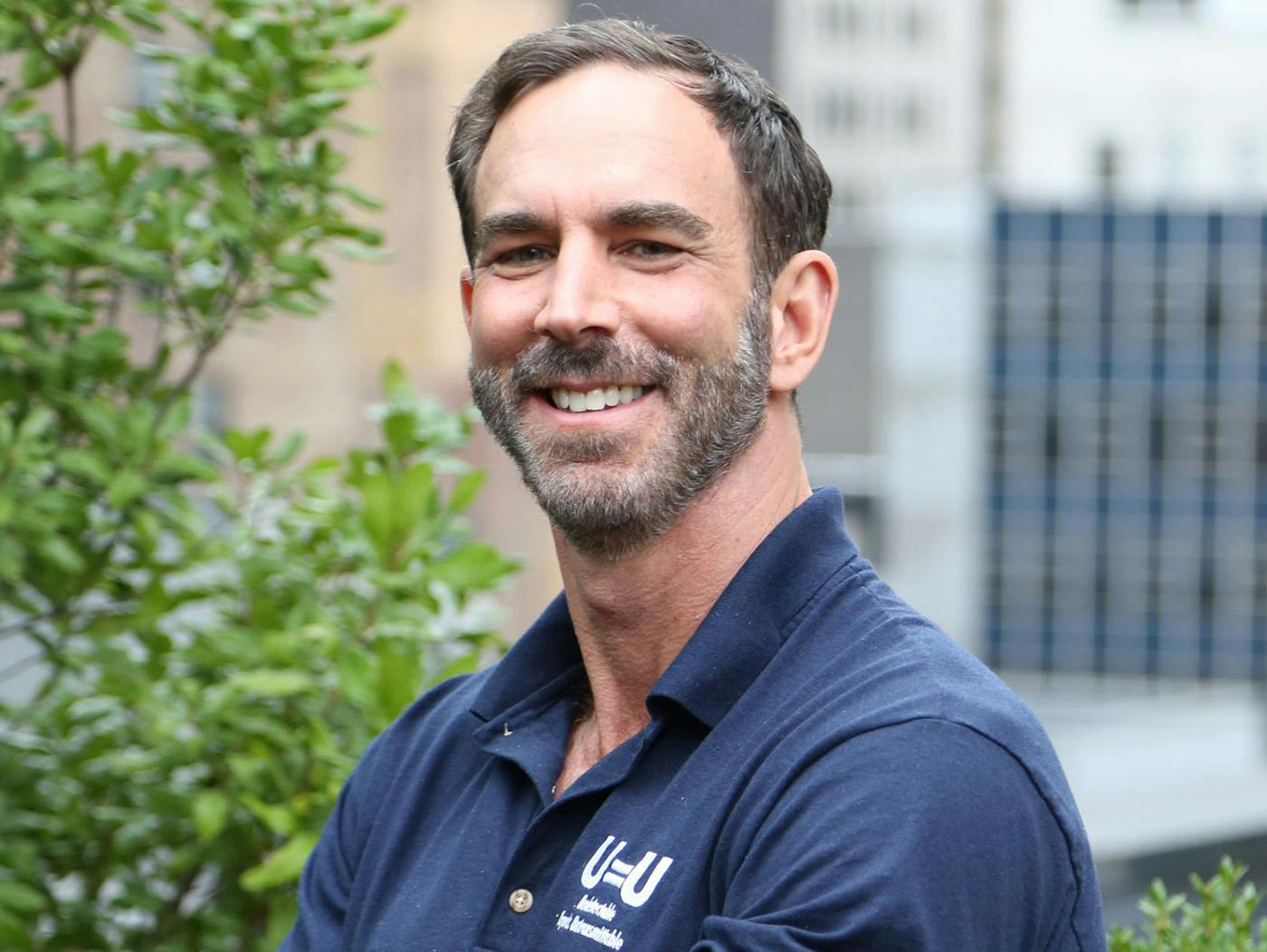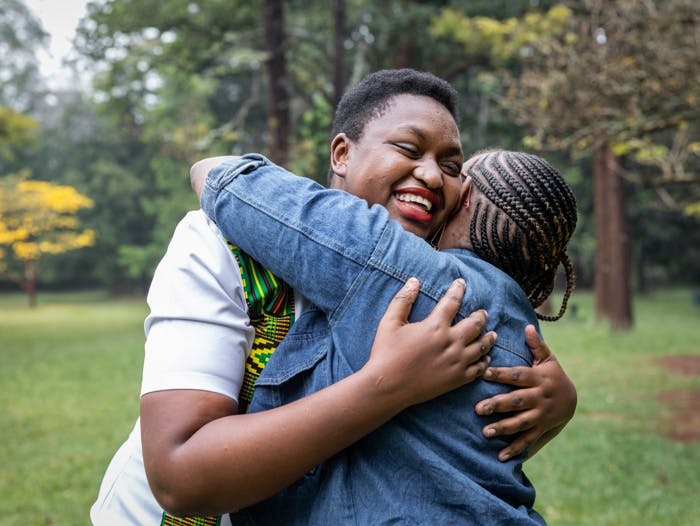Through continuous innovation, we deliver on patient wants and needs
Why are we leaders in HIV innovation? Because we listen. We collect insights from people living with HIV around the world that informs our approach to the discovery and development of innovative new treatment and prevention options.
Today, HIV treatments allow people living with HIV to suppress their virus to undetectable levels, but we won’t stop there – we want to better the quality of life for people living with and impacted by HIV. To do that we prioritise developing medicines that fit their lifestyle. We know that the needs of people living with HIV change over time, and we’re exploring new ways of treating and preventing HIV through new approaches in how we target the virus and deliver medicine.
Our scientists have a single focus: ending the HIV epidemic.
How do we develop new options for the HIV community?
The process of identifying, creating, and developing generally well-tolerated and effective HIV medicines is complex and requires ongoing collaboration between different research teams. Our facility in Branford, Connecticut in the US is one of the only HIV-dedicated research centres and allows our scientists to work together to discover and develop potential new HIV treatment and prevention candidates with a unified purpose; to leave no person living with HIV behind and end the HIV epidemic.
Can we go faster? How we accelerate and deliver on patient needs
The drug discovery and development process is complex and may take many years, but our teams at Branford are working to advance the speed at which we discover and develop new medicines. Developing a new medicine requires collaboration between scientists from multiple disciplines to design and deliver new drug candidates.
At Branford, these different specialties are all housed under one roof. Molecules are designed, synthesized, and researched for activity and optimal drug-like qualities. Once this process is complete, the drug candidates are seamlessly transitioned to the early development teams thus accelerating the overall drug development process.
You can learn more about each step of the drug development process, which starts in Branford, below.

Community Listening
At ViiV Healthcare, medicines development starts by listening to the needs of our patients. We do that through 1:1 conversations, clinical trials, patient surveys and a broad range of activities with the HIV community. By listening, we can identify unmet needs to better understand what kinds of medicines people want and need.
Discovery
Once we know the specific qualities our patients want in a medicine, our research teams brainstorm ways to target these qualities, then design molecules and test for them. Discovery scientists at ViiV Healthcare's Branford lab research millions of molecules that might have the potential to treat, prevent, or even cure HIV with the qualities our patients want.
Clinical studies
Once a discovery molecule candidate is safe to go into humans, it then moves to our clinical development teams to determine the safety, tolerability and efficacy of the drug for the HIV Community.
Regulatory approval
After being studied in a large enough group of patients to determine safety and effectiveness, the medicine is submitted to a regulatory agency that will review and ultimately determine whether and how it can be used and in which patient groups.
Real-World Research
Our research doesn’t stop once a medicine is approved. We continue to ask patients what they want and need, and the information we collect is called “real world evidence” provided by people who are taking our medicine as part of their everyday lives and not in a controlled clinical trial setting. Researchers at ViiV help ensure that HIV medicines are being used safely and effectively, and in some cases even improved upon.
Committed to the science, bound by our mission
We’ve come a long way in our mission to end the HIV epidemic, but there is still work to be done. We will continue to listen to the needs of people living with HIV to create new innovative options that not only suppress the virus to undetectable levels or prevent it from being acquired, but also contribute to a good quality of life.
"It's rewarding to be able to share the latest advancements with people living with HIV and to continue to provide options that suit their needs"
YOU MAY ALSO BE INTERESTED IN
It is now established that if you’re on treatment and have an undetectable viral load, you cannot pass on HIV through sex. Undetectable = Untransmittable, or U=U. This simple equation has profound implications for everyone living with HIV, and for economies and governments around the world.
We’ve got more than 50 active collaborations worldwide with pharmaceutical and biotechnology companies, government agencies, academic institutions and not-for-profit organisations to broaden our capabilities and enhance our performance.
To lift the substantial burdens of daily treatment and social stigma associated with HIV, a cure is essential towards accomplishing our goal of ending the HIV epidemic. With this goal in mind, we are in pursuit of a cure for HIV.
NP-GBL-HVX-COCO-220061 | August 2024
If you get any side effects, talk to your doctor, pharmacist, or nurse. This includes any possible side effects not listed in the package leaflet. You can also report side effects directly via the GSK Reporting Tool link https://gsk.public.reportum.com/. By reporting side effects, you can help provide more information on the safety of this medicine.
If you are from outside the UK, you can report adverse events to GSK/ ViiV by selecting your region and market, here.



